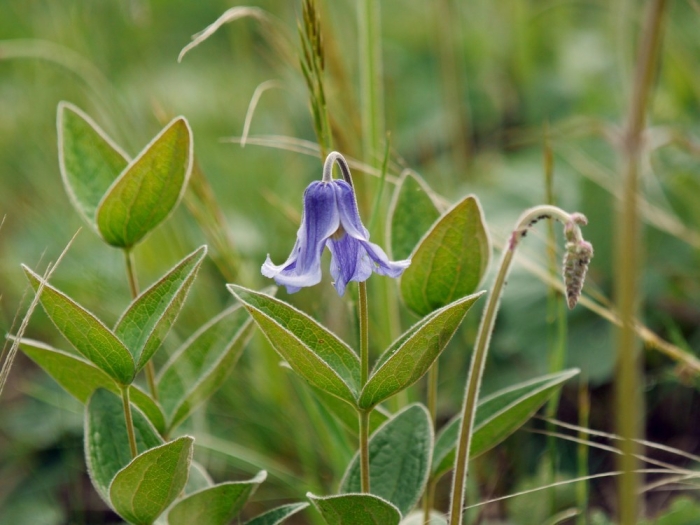Solitary Clematis
(Clematis integrifolia)
Solitary Clematis (Clematis integrifolia)
/
/

Roman
CC BY 4.0



















































Estimated Native Range
Summary
Solitary Clematis is valued for its ease of maintenance and the charming blue flowers that add a splash of color to garden borders, rock gardens, and containers. It is also suitable for naturalizing in informal areas of the garden. This species is hardy in American Horticultural Society zones 3 to 9. It thrives in full sun to part shade and prefers well-drained soil with consistent moisture. While it is not a climber like many other Clematis species, it can be supported with stakes or allowed to meander through other plants. Regular pruning can help maintain its shape and promote vigorous growth. Potential problems include Clematis wilt and slug damage, but these can be managed with proper care and vigilance.CC BY-SA 4.0
Plant Description
- Plant Type: Herb
- Height: 1.5-3 feet
- Width: 2-3 feet
- Growth Rate: Moderate
- Flower Color: Blue, Purple
- Flowering Season: Spring, Fall
- Leaf Retention: Deciduous
Growth Requirements
- Sun: Full Sun, Part Shade
- Water: Medium
- Drainage: Medium
Common Uses
Bee Garden, Bird Garden, Border Plant, Butterfly Garden, Deer Resistant, Drought Tolerant, Fragrant, Groundcover, Hummingbird Garden, Low Maintenance, Potted Plant, Rabbit Resistant, Rock Garden, Showy Flowers, Street Planting
Natural Habitat
Native to meadows, riverbanks, and forest margins in Europe and temperate Asia
Other Names
Common Names: Bush Clematis, Clématite À Feuilles Entières, Helbladig Klematis, Ganzblättrige Waldrebe, Quan Yuan Tie Xian Lian
Scientific Names: , Clematis integrifolia, Clematis nutans, Anemone integrifolia, Clematis elongata, Clematis inclinata, Clematis integrifolia var. heterophylla, Clematis integrifolia var. normalis, Clematis integrifolia var. subglabra, Clematis integrifolia var. tomentosa
GBIF Accepted Name: Clematis integrifolia L.